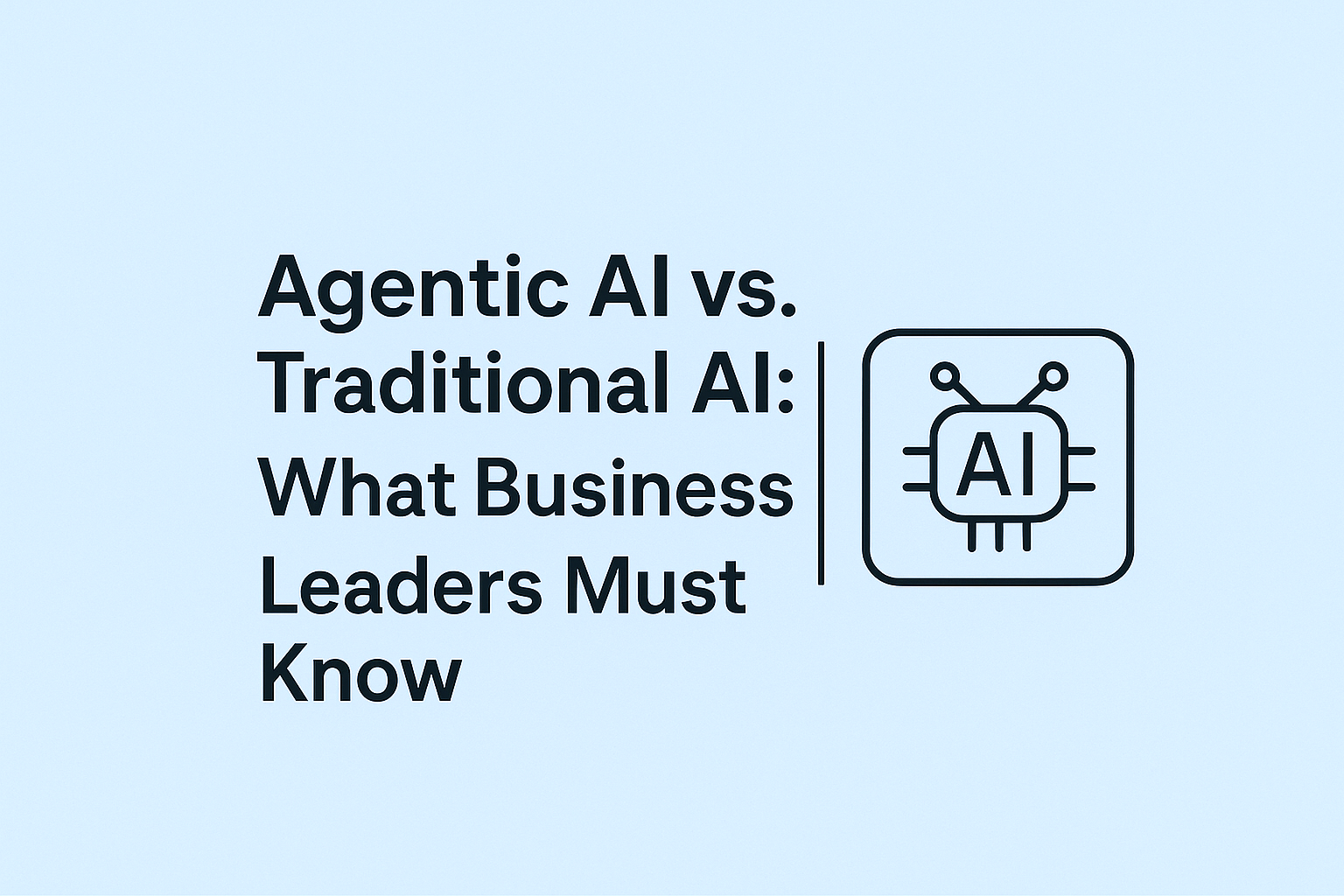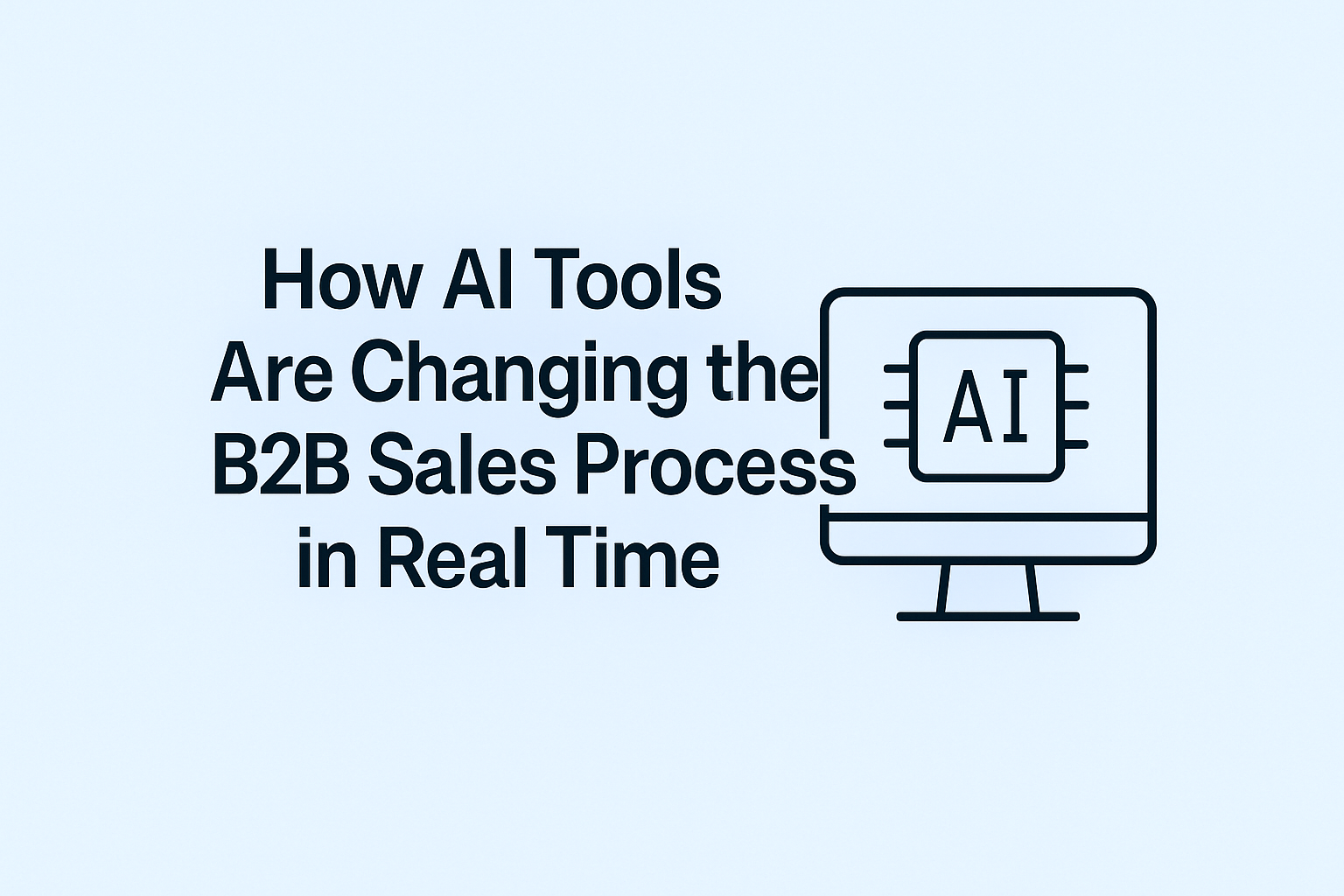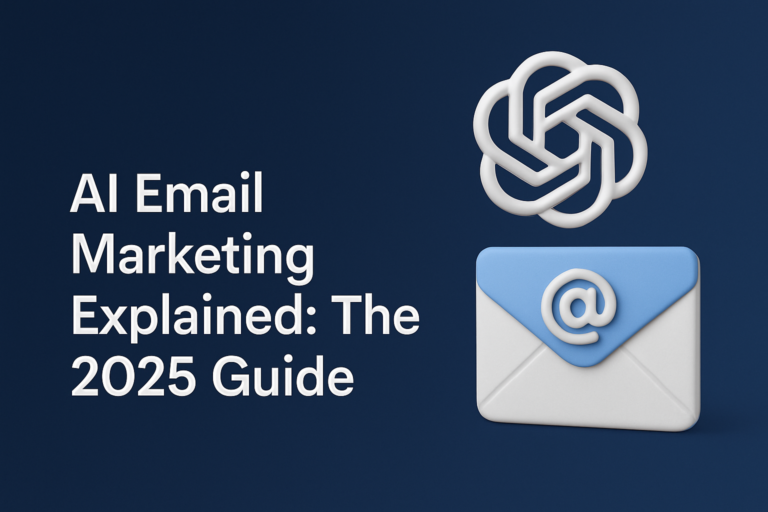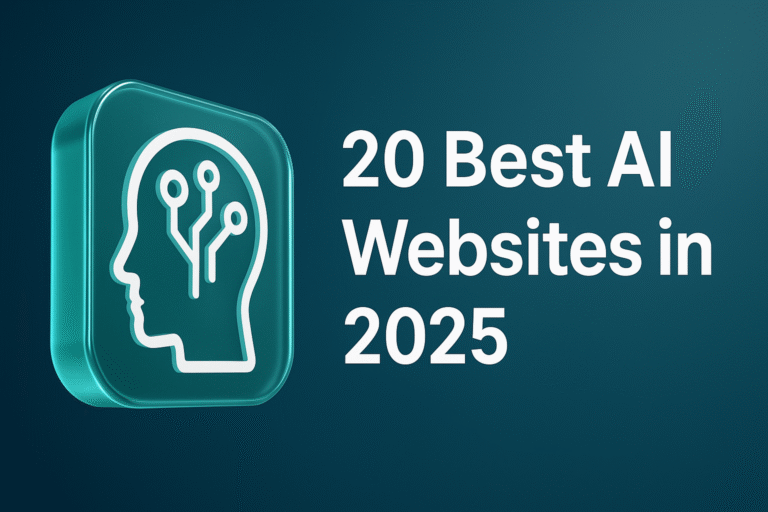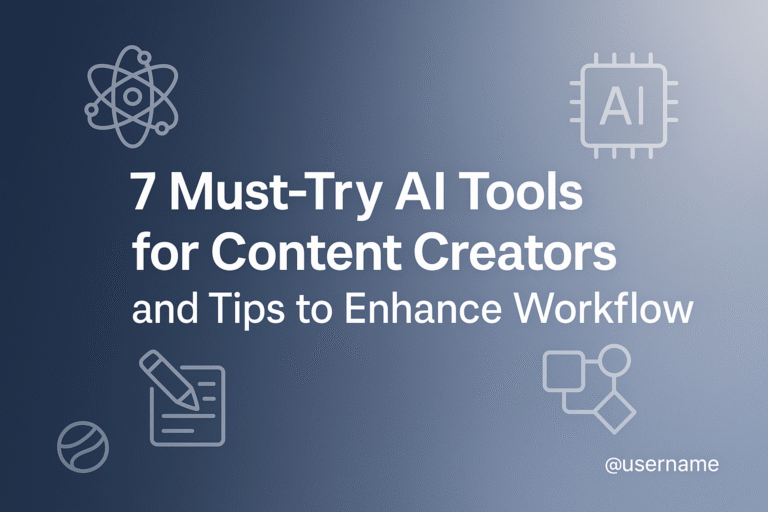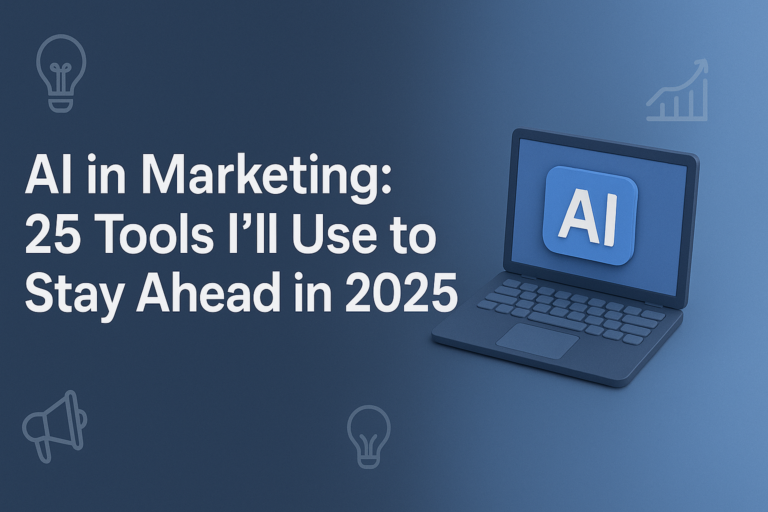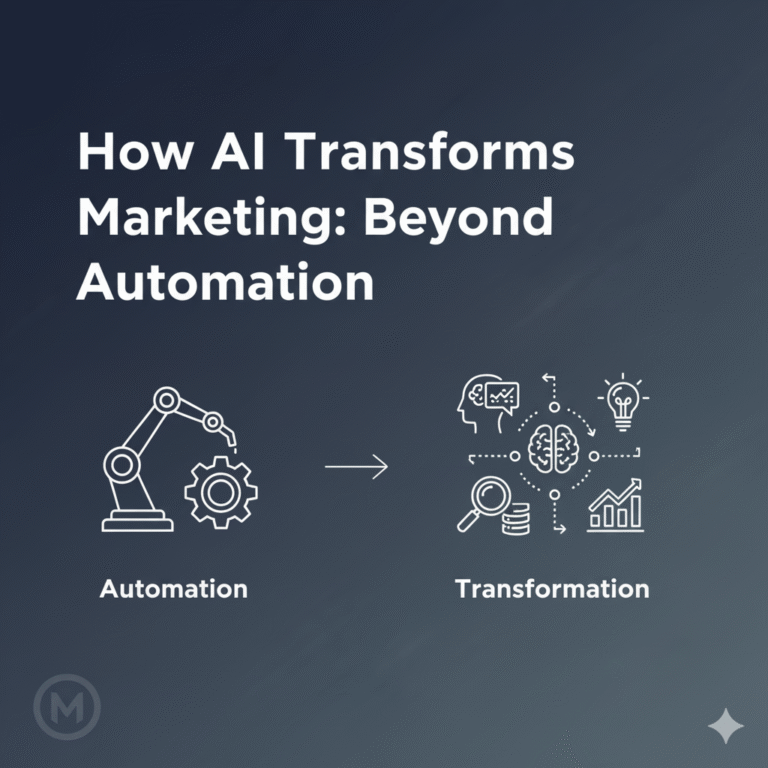Agentic AI vs Traditional AI: What Business Leaders Must Know
Businesses everywhere are talking about “agentic AI”—the tech that acts on its own—versus “traditional AI,” which waits for your every instruction. If you want to stay ahead, now is the time to understand how these two types of AI are different and which one can help your business grow.
What Is Agentic AI?
Agentic AI is changing what we expect from machines. Think of agentic AI as an employee who can set goals and figure out the best way to reach them without you having to watch every step.
These systems do more than just follow rules. Agentic AI can look at a problem, break it into smaller steps, use outside tools, and handle changes on the fly. For example, agentic AI could adjust your supply chain if a storm hits, without someone having to direct it. It is “agentic” because it acts, sometimes even before you know there’s an issue.
This is different from traditional AI, which follows instructions each time.
Key Traits of Agentic AI
- Autonomy: Makes choices and acts without needing every prompt.
- Goal-Setting: Understands what needs to get done, then plans and acts toward that.
- Adaptability: Handles surprises, learns from what happens, and tries new approaches.
- Interoperability: Uses APIs, connects with databases, and interacts with apps like a great teammate.
A recent MIT project showed how agentic AI can find new research ideas on its own—showing real-world value, not just theory.
What Is Traditional AI?
Traditional AI, often called “narrow AI,” is more like a simple machine that sticks to a script. It solves one problem at a time, always inside set boundaries. These models handle clear, predictable tasks.
Think of a spam filter that checks emails or a chatbot that answers basic questions. These systems always need to be told what to do. They do not change their goals, and they only learn when a human updates the model.
Examples of Traditional AI
- Recommendation engines: Like Netflix or YouTube suggestions.
- Search algorithms: Google uses these to list webpages.
- Voice assistants: Siri and Alexa follow your commands but don’t act on their own.
Traditional AI works well when you need something reliable for the same job. It’s not great if you want your AI to notice new problems or act in new situations.
Agentic AI vs Traditional AI: Key Differences
Now, let’s get straight to the point: how are agentic and traditional AI different? It comes down to independence, learning, and flexibility.
| Feature | Traditional AI | Agentic AI |
|---|---|---|
| Autonomy | Needs direct input for each task | Can plan and act on its own |
| Decision-Making | Follows set rules | Refines goals, adapts, replans |
| Tools Integration | Works within one app or set system | Uses APIs, databases, and tools |
| Learning | Must be retrained by humans | Can self-improve and optimize |
| Flexibility | Solves one task at a time | Handles complex, changing tasks |
| Collaboration | Usually solo | Can coordinate with other agents |
Agentic AI keeps track of what it learns, changes its path if something unexpected happens, and can even manage a group of sub-agents to get work done. In pilot tests, businesses cut manual workflow time by 30–60% with agentic AI compared to traditional AI systems.
Traditional AI, by contrast, can only do what it’s told. If the world changes, someone needs to update the model or code. That means less flexibility and less chance to spot and act on new opportunities.
How Agentic AI Helps Businesses
Agentic AI is more than just a cool new tool. It offers real business value. Many see it as the next big step, after generative AI like ChatGPT.
- Automate cross-team tasks: Moves info from HR to IT to Finance when a new employee joins, handling all steps.
- Cut costs: Over half of companies in pilots saw 20% or more cost savings with agentic AI—much better than normal automation.
- Streamline knowledge work: Drafts reports, sends out follow-up emails, and flags exceptions so you don’t get lost in details.
- Drive innovation: Lets teams try new ideas because routine stuff runs itself.
For example, a Reddit user shared how their agentic AI system manages document drafts, sends reminders, and only involves the team when needed. This means less time lost in email, more time for big-picture thinking.
What Are the Risks of Agentic AI?
Every powerful tool comes with risks. When you give AI the freedom to act, watch out for mistakes or bad decisions.
- Goal misalignment: If the AI gets the wrong idea of what “success” is, it may take actions you didn’t want.
- Less transparency: These systems can be hard to review or explain, making it tricky to trust every step.
- Security risks: If agentic AI can use APIs or access data, it could make a mistake or expose info.
- Job changes: As more work gets automated, some roles will shift or go away.
On Reddit, people worry about AI “going off-script.” Many experts suggest putting in “circuit breakers”—real-time checks and human approvals for big actions. This way, you get the benefits of agentic AI but keep control.
Real Examples: Agentic AI in Action
- Customer service: By 2029, agentic AI will solve 80% of common support issues with no human needed, leading to 30% less cost for support teams.
- Finance: Agentic AI can monitor markets, spot shifts, and adjust trading or investment plans in real time.
- Healthcare: AI agents can check patient data, spot risk patterns, and suggest care plans, letting doctors focus on big decisions.
- IT and DevOps: Agents can catch bugs, manage rollouts, or handle routine troubleshooting, so teams can focus on bigger fixes.
The key here is that the AI isn’t stuck waiting for each prompt. It sees the goal, looks for the best way, and keeps going until the job is done.
Should You Pick Agentic or Traditional AI?
This is not an all-or-nothing choice. Both types of AI have a place. Traditional AI is perfect for jobs that don’t change—fraud detection, data sorting, or any task with clear rules. It is easier to set up and comes with fewer moving parts.
Agentic AI fits when you need systems to run without a lot of oversight, the task changes a lot, or you want to automate work across departments. Many companies start with traditional AI, then add agentic systems to break out of the “automation rut.” Investors see the value, putting over $2 billion into agentic AI startups in just the last two years.
Frequently Asked Questions
What is agentic AI in simple terms?
Agentic AI is a type of artificial intelligence that acts independently to reach goals. It plans, decides, and does tasks without waiting for you to tell it exactly what to do.
How is agentic AI different from traditional AI?
Traditional AI does what it’s told for one job. Agentic AI manages many steps, sets its own path, and adapts as things change.
How does agentic AI help businesses save money?
By automating more complex work, agentic AI handles issues across teams and reduces manual hours, leading to 20% or higher cost savings in some pilots.
What are the main risks of agentic AI?
The biggest risks are mistakes in goal-setting, lack of transparency, and possible data leaks if the AI acts outside safe limits. Human checks are key to avoid problems.
Is agentic AI just hype?
No. The value is real, but only if you use strong oversight. Success comes from starting small, testing, and learning.
How do you start with agentic AI?
Pick a simple, low-risk workflow to test. Set up a cross-team group to watch results and grow the system step by step.
Conclusion
Agentic AI is changing how businesses work and compete. It lets you automate more, act faster, and try new things. But you still need to manage risks, set clear goals, and keep an eye on the system.
The future will likely mix both agentic and traditional AI to get the best of each.
Ask ChatGPT

